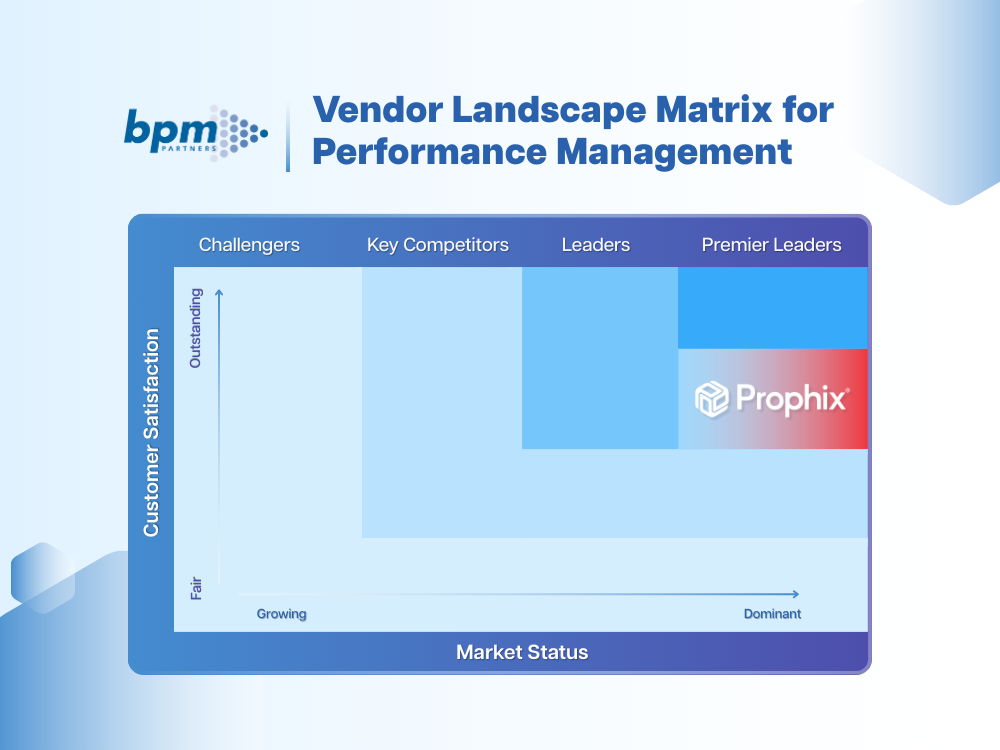Download Analyst Report
What is financial consolidation? A guide for 2025
Identify and overcome financial consolidation challenges so you can streamline your processes for a smarter, faster close.
November 14, 2024Financial consolidation is known to be a time-consuming, error-prone process for most finance teams.
But it's also essential and, often, required by law.
Through financial consolidation, the assets, liabilities, and transactions of multiple entities are combined as though they all belonged to a single entity. This helps leaders make more strategic decisions, but it's also a requirement for publicly traded companies in most jurisdictions.
While this is a technical process, it can be facilitated with the right knowledge and appropriate tools. Here’s a full guide to financial consolidation.
Key takeaways
- Identifying and overcoming the challenges associated with financial consolidation will help you streamline your processes for a smarter, faster close.
- Often a manual, time-consuming process, the right software tools can streamline and automate most of it.
- While financial consolidation is only legally required for some organizations, it’s essential for financial planning and analysis.
Financial consolidation definition and its business implications
Financial consolidation provides essential insights into a company’s performance by accounting for subsidiaries to accurately represent its finances. This can have a huge impact on strategic decisions.
Financial consolidation combines financial data (like assets and liabilities) and financial statements (balance sheets and cash flow statements) from multiple entities into one.
This accurately represents the financials and operations of an entity with a stake in other entities. Keeping visibility on all relevant operations across multiple entities can be challenging for leaders when relevant data is scattered across multiple sources, like spreadsheets or distinct finance tools.
The insights gleaned from financial consolidation also lead to better strategic decisions, more reliable budgets, and more accurate forecasts.
Preparing consolidated statements is often required by law for public organizations. For these entities, financial consolidation isn't just a matter of improving visibility or financial reporting, it's about staying compliant.
The main purpose of financial consolidation is to provide an at-a-glance view of the overall performance of a parent company plus its subsidiaries. This view is effective for high-level reporting, financial planning, and forecasting, and for ensuring regulatory compliance standards are met.
Financial consolidation provides essential insights into a company’s performance by accounting for subsidiaries to accurately represent its finances. This can have a huge impact on strategic decisions.
Financial consolidation vs. business consolidation
Business consolidation is the combination of multiple smaller business entities into one larger entity, whereas, with financial consolidation, the subsidiaries and parent company remain separate entities.
Financial consolidation vs. consumer debt consolidation
Consumer debt consolidation is combining multiple debts into a singular payment plan, usually monthly. Financial consolidation is the process of combining financial statements across multiple business entities.
Financial consolidation vs. financial close
Financial close is the finalization of finances at the end of an accounting cycle. Usually, a financial close happens when accountants “close the books” after a fiscal quarter or year. Financial consolidation is combining financials from multiple business entities.
Financial consolidation example
Parent company A has $2,000,000 in annual revenue, and $750,000 in assets making up their financial statement.
Subsidiaries B and C each report revenues of $1,000,000 and $400,000 in assets.
Reporting solely on the financials of parent company A wouldn’t accurately represent all its revenues and assets. Financial consolidation takes the combined total of parent company A, and subsidiaries B and C, for a complete consolidated picture.
What are the three stages of financial consolidation?
No matter the size or jurisdiction of relevant entities, all financial consolidations go through the same three stages: data collection, data consolidation, and reporting results.
1. Data collection
The first stage of financial consolidation is collecting all the financial data you need to consolidate. That can mean getting balance sheets from all entities being consolidated or going through general ledgers line by line to find all relevant transactions.
2. Data consolidation
Once all the necessary data is collected, it has to be consolidated into single statements. This involves cross-referencing transactions to eliminate duplicates (e.g. sales of products between entities), converting all transactions to the same currency, combining assets, and more.
3. Reporting results
After the consolidation stage is completed, the Office of the CEO prepares consolidated financial statements and reports. These may be exclusively for internal use (to guide strategies and forecasts) or for external reporting (to government entities and regulators).
What are the six key steps in the financial consolidation process?
The three stages of financial consolidation listed above can be broken down further into six key steps. While these steps are often done by consolidating spreadsheets, financial performance platforms like Prophix One can automate much of this work and simplify the consolidation process.
1. Collect your accounting data
Consolidation involves a significant amount of data. It must be collected from multiple sources, across entities and tools. It then has to be cleaned, validated, and loaded into whatever tool you use for consolidation.
To collect accounting data from multiple entities, using specialized software, like a Financial Performance Platform, is your best bet. This way, you can automate the collection process and have all your data within a single platform.
2. Map the accounting data onto a chart of account structure
A chart of accounts (CoA) is an index that cleanly lists all transactions a company has made within a specific fiscal period. Mapping accounting data from all entities into this structure gives an organized view of your financial health.
3. Apply foreign exchange rates
When the subsidiaries being consolidated operate in different countries, you’ll need to apply foreign exchange rates to have all transactions in a single currency in your final consolidated statement.
4. Eliminate intercompany transactions
Intercompany transactions should be omitted from financial consolidation, so remove them where necessary.
5. Verify cumulative translation adjustments
Cumulative translation adjustments (CTAs) are the discrepancies on a balance sheet from conversion rate gains or losses created by exchange rate variations. Ensure your cumulative translation adjustments are up to date.
6. Generate consolidated financial statements and report consolidation results to stakeholders
Use this consolidated data to generate a streamlined financial report for stakeholders to easily digest. Clarity and visibility of financial health are crucial in this statement.

What are the different methods of consolidation accounting?
Mapping the key consolidation steps is simple, but keep in mind there are multiple methods of consolidation accounting.
Full consolidation
The parent company generates a report of all combined financial statements from subsidiary companies if it holds a majority share or can demonstrate significant alignment in leadership across entities. The subsidiary company’s statements will include expenses, assets, revenues, liabilities, and more.
Proportionate consolidation
Proportionate consolidation represents a percentage of the assets and liabilities of a subsidiary company on the balance sheet of its parent company. This method was made obsolete in 2013 and was replaced by the equity method.
Equity method of consolidation
This method is used when a company owns a minority share in a subsidiary (i.e. 49% or less). The investor company will report its share of the investee's equity as an investment at cost.
What are consolidated financial statements?
With consolidation steps and methods mapped out, let’s review the different types of consolidated statements.
Consolidated income statement
A consolidated income statement— or consolidated statement of operations— is a summary of total expenses and total sales revenue. This statement reflects a specific financial period like a predetermined financial cycle or fiscal year.
Consolidated balance sheet
A consolidated balance sheet— or consolidated statement of financial position—details the financial position of a parent company and all subsidiaries combined.
Consolidated statement of cash flow
A consolidated statement of cash flow—or consolidated statement of changes in funds—reports the effects of an entity’s changes in cash flow over a defined period. Just like financial consolidation, a consolidated statement of cash flow reports for a parent company and all its subsidiaries.
Challenges of financial consolidation in accounting
Like with any organization-wide process, there are challenges to consider for financial consolidation. Consider the following before building your consolidation strategy:
- Data quality errors: Are all entities using the same method of data entry? Are there inconsistencies with data processes that might affect your reporting?
- Lack of automation and human error: Completing your financial consolidation without software means a lengthy process with the potential for human error.
- Changing reporting requirements: Reporting requirements could change at any time based on your organization's needs or compliance requirements within your jurisdiction.
- Complications between countries and foreign currencies: Are the processes for collaboration with international subsidiaries and currencies consistent across all entities? Reconciling this data efficiently is crucial for big-picture reporting.

Benefits of financial consolidation software
- Faster data collection and validation: Manual data collection can be time-consuming, especially if there are many entities under a parent company. Validation can also be tedious and automating this process will cut the time spent expeditiously.
- Less human error: Consolidating manually would require not only an exorbitant amount of time, but it would be such meticulous work that it would leave a substantial amount of room for human error.
- Automate time-consuming tasks like journal creation: Aside from manual data collection, a large amount of time would also be spent appropriately logging transactions, record-keeping, creating journal entries, and maintaining the records of statements.
- Analyze consolidation analytics: Once you’ve consolidated the data, extracting findings would be another layer of manual work for your team. Financial consolidation software can automate this process and make it easier to identify trends.
- Streamline reporting: Financial consolidation software is built specifically to deliver reporting quickly and effectively.
- Better compliance with IFRS or GAAP standards: Compliance standards can change at any given time. Ensuring you have consolidation software that can meet compliance standards will save your team time and prevent speed bumps down the road.

Financial consolidation with Prophix
Because the financial consolidation process is so involved, opting for finance-specific software will ensure an efficient and simple process. Prophix One, a Financial Performance Platform, was built with your financial consolidation needs in mind. Offering a performance-based platform to simplify any financial process, Prophix One is equipped to help with financial consolidation, account reconciliation, financial close, ESG reporting, and anything else your organization needs. Prophix also has scalability in mind, offers a vast resource library, and has top-notch customer support.
Automate your financial consolidation process with Prophix
Finding financial consolidation software to suit your team can seem daunting. That’s why Prophix has all your team’s financial consolidation needs covered. Key features include:
- Exchange rate management: Skip the tedious work of calculating exchange rate and FX discrepancies.
- Elimination journal creation: Elimination journal creation and other means of record-keeping are crucial for your team. Prophix One can streamline this process to save you time.
- Consolidation analytics: Accessing detailed analytics is key for an effective financial consolidation report. Prophix One can present your data in such a way that your findings are clear for all stakeholders.
Ready to see what Prophix One can do for your financial consolidation process?
Insights for next-gen finance leaders
Stay ahead with actionable finance strategies, tips, news, and trends.






